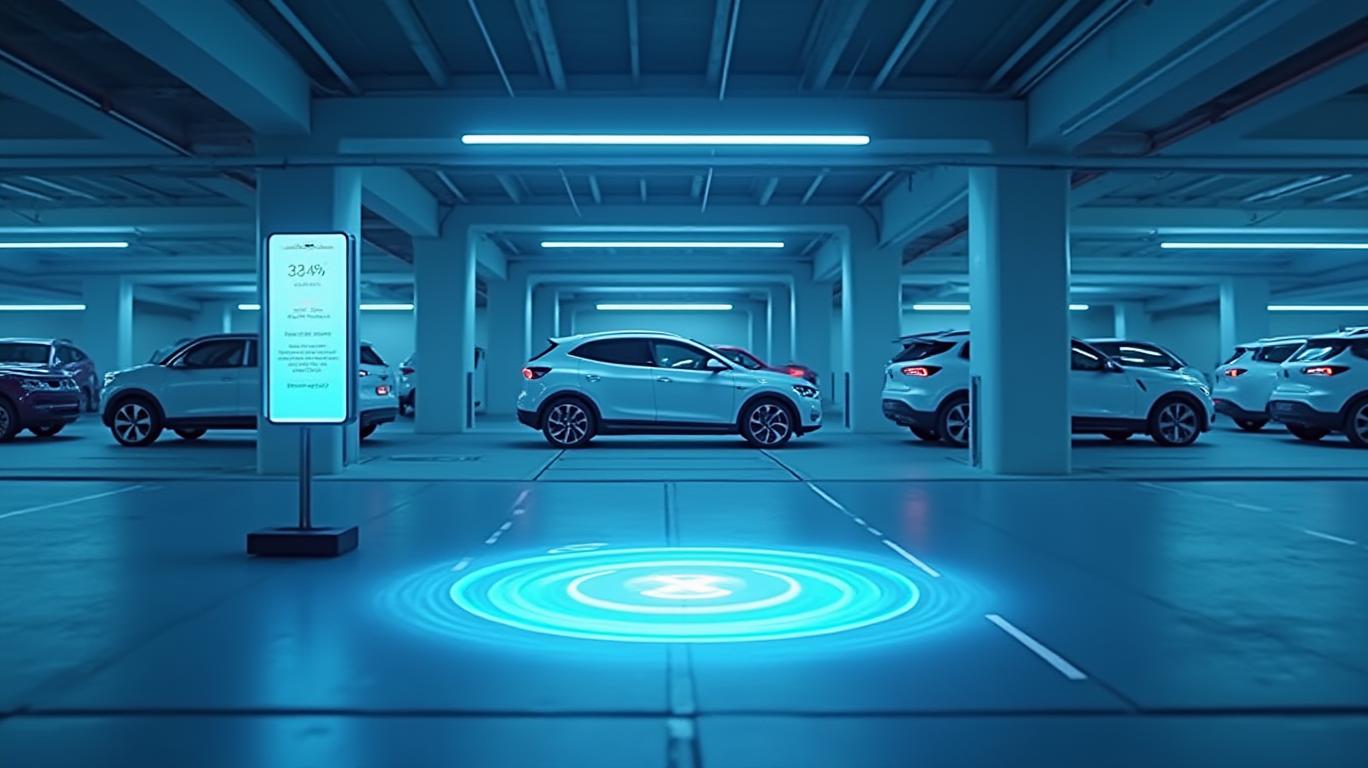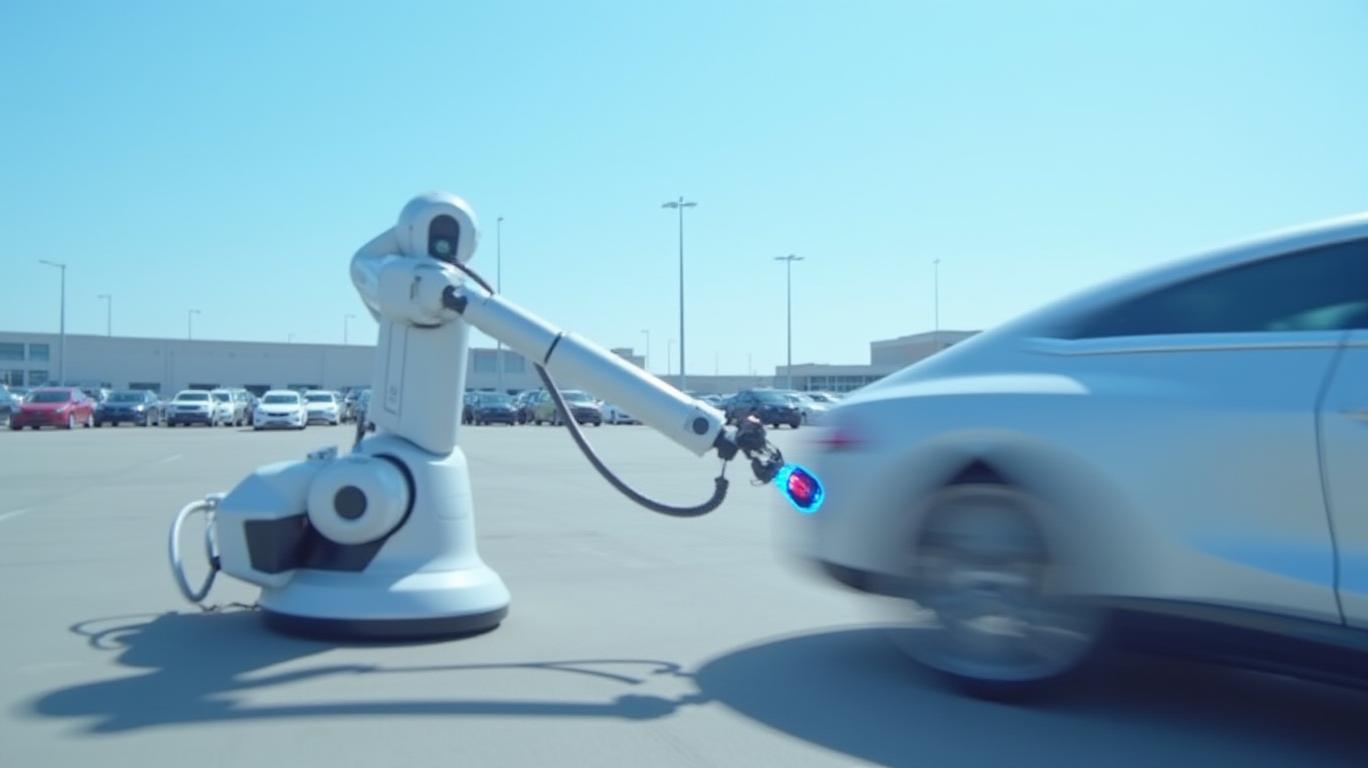Wireless EV Charging in Automated Parking: Charging Robotics Paves the Way for Sustainable Urban Mobility
The rise of electric vehicles (EVs) has created a logistical conundrum: how to efficiently charge cars in dense urban environments where parking spaces are scarce and automated parking systems are increasingly common. Enter Charging Robotics, an innovator that has just unveiled a groundbreaking solution—wireless EV charging integrated into automated parking facilities. This technology isn’t just a minor tweak; it’s a leap toward solving one of the most pressing challenges in urban mobility. Let’s unpack why investors should take notice.

The Technology: AI-Powered, Plug-Free Charging
Charging Robotics’ system eliminates the need for manual plug-ins, a critical barrier in robotic parking environments where vehicles are stacked vertically or moved autonomously. The wireless setup uses electromagnetic resonance to transfer power, while advanced AI algorithms optimize energy distribution based on factors like departure times, battery capacity, and driver behavior. This ensures vehicles are charged efficiently without overloading the grid. A pilot project in Tel Aviv in 2024 proved the system could charge multiple EVs simultaneously—a critical test for scalability.
The user-facing app adds convenience, allowing drivers to schedule charges, monitor progress, and pay bills—all from their phones. This integration of real-time data with cloud connectivity positions the system as a building block for future smart cities, where infrastructure must communicate seamlessly with vehicles and users.
Market Opportunity: Riding Two Growth Waves
The company’s innovation straddles two booming markets: electric vehicles and automated parking systems. The global EV market is projected to hit $1.2 trillion by 2030, driven by falling battery costs and government mandates. Meanwhile, automated parking systems are gaining traction in urban areas where space is at a premium. The market for such systems is expected to grow at a CAGR of 8.3% through 2030, reaching $2.4 billion.
Charging Robotics’ solution bridges these markets, offering a scalable answer to a problem that could otherwise hinder EV adoption in cities. Partnerships like the 2024 order from Parking Design Ltd. (for 12 systems) signal early commercial validation. With 67% ownership by parent company Xylo Technologies, the firm also benefits from a corporate structure that can provide capital and technical support for rapid scaling.
Note: While Xylo’s stock ticker is undisclosed, tracking broader EV infrastructure trends (e.g., FCHI) offers insight into investor sentiment toward this sector.
Risks and Challenges
Despite the promise, risks remain. Technical hurdles like interference with other systems or inconsistent charging efficiency could delay adoption. Market acceptance is another hurdle: drivers and parking operators must see clear value in wireless charging over existing plug-in alternatives. Charging Robotics’ pilot in Tel Aviv was a success, but broader deployment requires proving reliability at scale.
The company also faces competition. Major players like Tesla (TSLA) and ChargePoint (CHPT) are expanding charging networks, while startups like Plugless Power are developing competing wireless solutions. However, Charging Robotics’ focus on automated parking niches it into a space less contested than public charging stations.
Conclusion: A Strategic Bet on Urban Electrification
Charging Robotics’ installation marks a pivotal moment. By addressing a specific but critical gap in EV infrastructure, it aligns with global trends toward urban sustainability and smart technology. The 2024 pilot success and the 12-system order suggest early demand, while partnerships with firms like Parking Design validate its business model.
Consider the numbers: if automated parking systems grow to $2.4 billion by 2030, and even 20% adopt wireless charging, Charging Robotics could command a $480 million niche—a sizable opportunity. Add to this the $1.2 trillion EV market, and the company’s dual market play becomes a compelling investment thesis.
However, investors must weigh execution risks. Success hinges on scaling without technical glitches and convincing urban planners and automakers to adopt the system widely. Still, for those betting on a future where EVs dominate and cities prioritize efficiency, Charging Robotics is a name to watch. This isn’t just about parking—it’s about redefining how cities power the vehicles of tomorrow.


_442a2dcc1749832873286.jpeg)
_e68fac6d1749831664430.jpeg)






